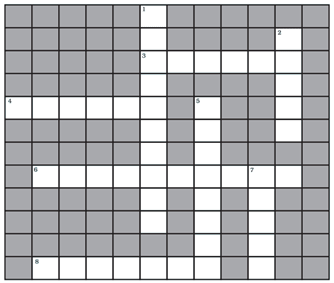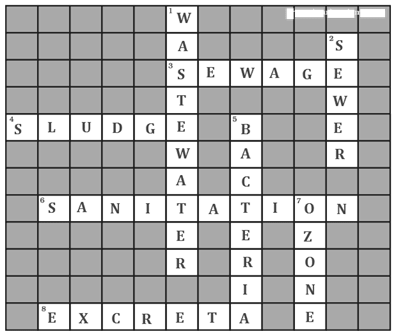NCERT Solutions Class 7 Science Chapter 13 Wastewater Story is provided here to help students in understanding the topic thoroughly. All these solutions are solved by experts with a detailed explanation. Class 7 NCERT Solutions for Science Chapter 13 includes all the textbook exercise questions and answers. These solutions will help students complete their assignments & homework.
Class 7 Science Wastewater Story Questions and Answers
Exercise Questions
Question 1: Fill in the blanks:
(a) Cleaning of water is a process of removing ____________.
(b) Wastewater released by houses is called ____________.
(c) Dried ____________ is used as manure.
(d) Drains get blocked by ____________ and ____________.
Answer:
(a) Cleaning of water is a process of removing pollutants.
(b) Wastewater released by houses is called sewage.
(c) Dried sludge is used as manure.
(d) Drains get blocked by cooking oil and fats.
Question 2: What is sewage? Explain why it is harmful to discharge untreated sewage into rivers or seas.
Answer: Sewage is the wastewater containing both liquid and solid wastes produced by human activities from homes, industries, hospitals, offices, etc. It is harmful to discharge untreated sewage into rivers or seas because it can pollute the whole sources of water. Sewage contains harmful substances and disease-causing organisms. Therefore, it is dangerous to release untreated sewage in the water.
Question 3: Why should oils and fats be not released in the drain? Explain.
Answer: Oil and fats can clog the drains reducing its effectiveness in filtering water. In open drains, they block the pores in the soil and thus hamper the filtration by soil. Hence, oil and fats should not be released in the drain.
Question 4: Describe the steps involved in getting clarified water from wastewater.
Answer: Treatment of wastewater involves physical, chemical, and biological processes, which remove physical, chemical and biological matter that contaminates the wastewater.
The steps involved in getting clarified water from wastewater are as follows:
(i) Use an aerator to bubble air through the wastewater. A mechanical stirrer or a mixer can also be used in place of the aerator. This helps in reducing bad odour of the wastewater.
(ii) Then, the water is filtered through the layers of sand, fine gravel, and medium gravel. Filtration makes the wastewater clean from various types of pollutants. The water is filtered continuously until it becomes clear.
(iii) Then any disinfectant such as chlorine tablet is added to the filtrate and stirred to obtain completely clear water.
Question 5: What is sludge? Explain how it is treated.
Answer: Semi-solids such as faeces that settle down during wastewater treatment is called sludge.
This sludge is removed using a scraper and then transferred to a tank where it is decomposed by anaerobic bacteria to produce biogas. This biogas is used as a low-cost fuel for heating, cooking, etc. It is also used to produce electricity.
Question 6: Untreated human excreta is a health hazard. Explain.
Answer: Untreated human excreta contains many pathogens and disease causing microbe like cholera, diarrhea, typhoid, polio, meningitis, hepatitis etc. The germs of these diseases can easily reach human population through air, water or insects and through contaminated food and water. Thus, untreated human excreta are a health hazard.
Question 7: Name two chemicals used to disinfect water.
Answer: Chemicals like chlorine (Chlorine dioxide) and ozone (in the pharmaceutical industry) are commonly used to disinfect water.
Question 8: Explain the function of bar screens in a wastewater treatment plant.
Answer: Bar screens are used to remove large objects like rags, sticks, cans, plastic packets napkins, etc.
Question 9: Explain the relationship between sanitation and disease.
Answer: Sanitisation and disease are interrelated as lack of sanitisation lead to illness and good sanitisation practices prevent the diseases. Sanitation involves proper disposal of sewage and refuses from house and public places. If sanitation is there, no disease will occur, but if sanitation is not there various types of disease will occur and spread. So sanitation should be kept to avoid disease.
Question 10: Outline your role as an active citizen in relation to sanitation.
Answer: Every citizen has a role to play in maintaining proper sanitisation. Following are the things we should follow to play an active role.
- Ensure that our surroundings are kept clean.
- The sewage system in the house should be properly managed
- Report to the concerned authoritive immediately in case of leakages in sewage pipes.
Question 11: Here is a crossword puzzle: Good luck!

Across
3. Liquid waste products
4. Solid waste extracted in sewage treatment
6. A word related to hygiene
8. Waste matter discharged from human body
Down
1. Used water
2. A pipe carrying sewage
5. Micro-organisms which causes cholera
7. A chemical to disinfect water
Answer:

Question 12: Study the following statements about ozone:
(a) It is essential for breathing of living organisms.
(b) It is used to disinfect water.
(c) It absorbs ultraviolet rays.
(d) Its proportion in air is about 3%.
Which of these statements are correct?
(i) (a), (b) and (c)
(ii) (b) and (c)
(iii) (a) and (d)
(iv) All four
Answer: (ii) (b) and (c)
Having a good grasp over CBSE NCERT Solutions for Class 7 Science will further help the students in their preparation for board exams and other competitive exams. NCERT Solutions for Class 7 Science Chapter 13 Wastewater Story provided by CBSE Path help students to clear their doubts and to obtain good marks in the exams. All the solutions provided in this article are strictly based on the CBSE syllabus and curriculum.